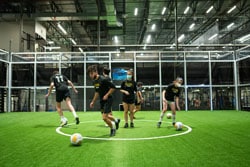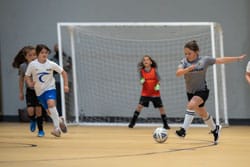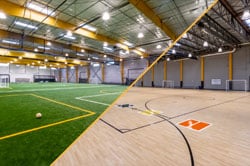The SpeedLab Score – Scorecard
This gamified information is a comprehensive breakdown of the SpeedLab Score for ages 12+ highlighting the key categories of an athlete’s skills.

Innovating Athletic Development
SpeedLab aims to transform the subjective nature of athletic development with an objective data-driven approach in order to give you the opportunity to achieve your athletic goals. The SpeedLab Score is our pioneering assessment designed for athletes ages 12+ to measure and track your skills, identify areas for development, and create a baseline for you to work from.
We present this critical information in an accessible and comprehensive format – the Scorecard.
The Scorecard is a gamified document designed to provide you with concrete data on your overall performance, a breakdown of your individual scores, a comparison to your peers in order to track your current performance and continued development, and suggested development areas and training recommendations. This actionable information is key because learning and growing can only happen when you receive feedback and are provided with clear goals.
The first image presented to the left of the Scorecard is a snapshot of your most recent assessment performance. There are three key points of information: your name, your overall score, and a numerical breakdown of the three categories that formed the overall score. The top number is the cumulative average of your performance. The three categories each have a composite number that represents your score for that particular measurement. We applied a composite scoring system, from 0-100, to these categories after collecting data from over 15,000 tests. This was implemented to help simplify the raw scores collected.

- The speed score is taken from your max sprinting speed during the 30-yard sprint.
- The strength score is taken from your 0-10-yard time achieved during the 30-yard sprint.
- *We use Strength here as success in this phase is a result of your ability to produce high amounts of force and accelerate horizontally in your first few steps.
- The agility score is taken from the reactive agility test performed on our SpeedCourt.
The collection of these 3 scores established your Physical Performance Score; a score you should look at improving over time by addressing key aspects of your physical performance.
Our large proprietary database allows us to effectively create a composite scoring structure and compare athletes. The next section of the Scorecard takes that comparison a step further and breaks down the athlete’s performance compared to their peers.
On the bottom of the first page, you will see how you compare to other athletes of the same age and gender. This includes all of your raw scores for your 10-yard, 30-yard, top speed, and agility times. This table also provides the averages for your age group and gender as well as the top scores. If you’re looking forward and want to see how your scores measure against the future competition, we have added college and professional athletes’ scores we’ve collected over the last few years.

Training Recommendations















